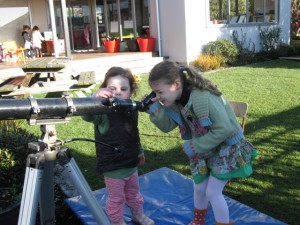 |
|
Junior
Page
|
 |
|
Introduction We aim to show that astronomy can be fun and a great learning experience for both adults and children. Swindon Stargazers is committed to encouraging the younger generation in the joys and rewards of practical astronomy. With the help of links to other websites, and special thanks to NASA and JPL this page will hopefully prove a great resource for parents and educators alike. |
 How does a telescope work? |
|
The Solar System
The Planets To learn more about our solar system, click on the banner below
Saturn - Lord of the Rings
"We're looking at a string of remarkable discoveries -- about Saturn's magnificent rings, its amazing moons, its dynamic magnetosphere and about Titan's surface and atmosphere," says Dr. Linda Spilker, Cassini project scientist. "Some of the mission highlights so far include discovering that Titan has Earth-like processes and that the small moon Enceladus has a hot-spot at its southern pole, jets on the surface that spew out ice crystals and evidence of liquid water beneath its surface." Cassini's observations of Saturn's largest moon, Titan, have given scientists a glimpse of what Earth might have been like before life evolved. They now believe Titan possesses many parallels to Earth, including lakes, rivers, channels, dunes, rain, snow, clouds, mountains and possibly volcanoes. The spray of icy
particles from the surface jets collectively forms a towering plume
three times taller than the width of Enceladus. The moon’s diameter
is about 500 kilometers (around 300 miles) It is now thought that the
plume feeds particles into Saturn's most expansive ring, the E ring.
Already in the extended mission, the spacecraft has come as close as
25 kilometers (15 miles) from the moon's surface. Saturn - Lord of the Rings...
Resources For Parents and Educators
|